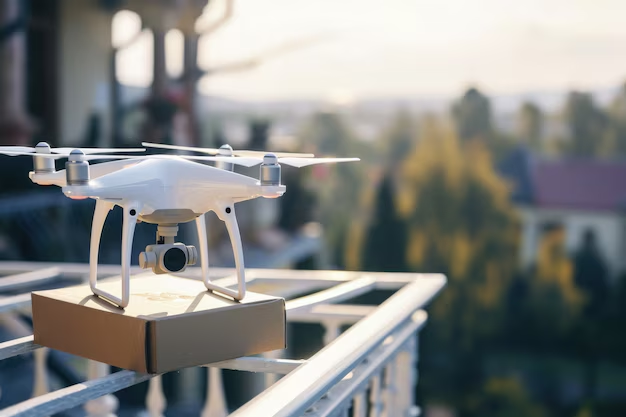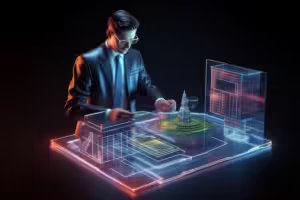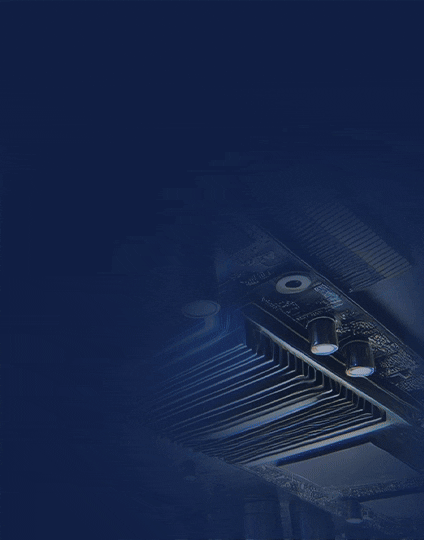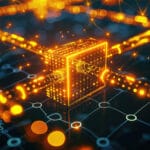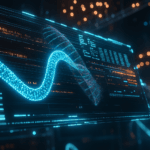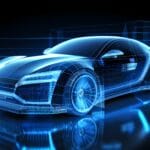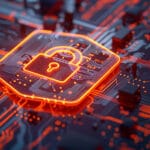Drone technology has rapidly evolved over the past decade, transforming industries ranging from agriculture and logistics to cinematography and surveillance. With this growth, the demand for drones to perform complex tasks with greater efficiency has skyrocketed. One of the primary challenges faced by drone manufacturers and operators is managing power effectively to maximize flight time while ensuring optimal performance.
Power management in drones is crucial as it directly impacts their range, stability, payload capacity, and the overall success of a mission. Unlike traditional vehicles, drones rely heavily on battery power to stay airborne, making the efficient use of this energy vital for meeting operational demands. The balance between maximizing flight time and maintaining high performance—especially when carrying heavy payloads, navigating difficult weather, or performing intricate maneuvers—is a fine one.
As drone applications become more advanced and widespread, achieving improved power management is essential not only to extend battery life but also to enhance flight safety, reduce operational costs, and optimize overall system efficiency. This article delves into the key aspects of power management in drone technology, exploring how different factors, innovations, and strategies contribute to enhancing flight time and performance.
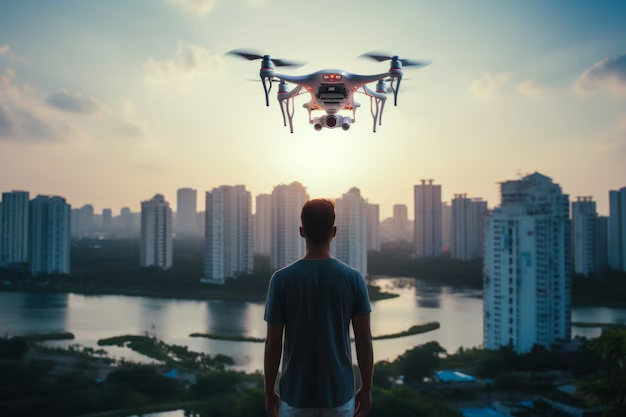
Understanding Drone Power Systems
A drone’s power system is the backbone of its functionality, directly influencing its performance, flight duration, and overall efficiency. Understanding the components and technologies that make up the power system is essential for optimizing power management strategies.
Key Components of a Drone Power System
- Batteries
- Battery Types: The most common battery types used in drones are Lithium Polymer (LiPo) and Lithium-ion (Li-ion) batteries. Both offer high energy density and are lightweight, making them ideal for drone applications.
- LiPo Batteries: Known for their light weight and ability to provide high discharge rates, LiPo batteries are widely used in drones. They offer excellent power-to-weight ratios, essential for drone performance.
- Li-ion Batteries: While slightly heavier than LiPo, Li-ion batteries have a longer lifespan and offer better energy efficiency, making them suitable for longer missions.
- Battery Types: The most common battery types used in drones are Lithium Polymer (LiPo) and Lithium-ion (Li-ion) batteries. Both offer high energy density and are lightweight, making them ideal for drone applications.
- Motors and Propulsion Systems
- Brushless DC Motors (BLDC): These motors are commonly used in drones because they offer high efficiency, long life, and smooth operation. BLDC motors require less power and provide higher thrust-to-weight ratios, making them an ideal choice for both commercial and recreational drones.
- Propellers: The design and size of drone propellers also play a role in power consumption. Larger and more efficient propellers reduce the energy needed to maintain lift, thus extending flight time.
- Power Distribution Board (PDB)
- The Power Distribution Board is responsible for distributing power from the battery to the various components, including motors, flight controllers, GPS, and sensors. Efficient PDB design can minimize power loss and ensure that the drone’s power system operates smoothly.
- Flight Controller and Power Management Circuitry
- The Flight Controller (FC) is the brain of the drone, managing various aspects of flight such as stabilization, navigation, and sensor data processing. Modern flight controllers are designed with built-in power management circuits to optimize energy consumption. These controllers monitor power usage and adjust the performance of motors and sensors based on the drone’s flight status.
- Voltage Regulators and Power Converters: Drones often feature voltage regulators or power converters that ensure the components receive the correct voltage and current, preventing over-consumption or under-utilization of power.
- Sensors and Payload
- Drones equipped with additional sensors (e.g., cameras, LiDAR, thermal sensors) or payloads (e.g., packages, delivery items) consume more power. These sensors often require specific power management to balance their demand with the need for extended flight time. Payload weight also influences power usage, as heavier loads require more energy to lift and maneuver.
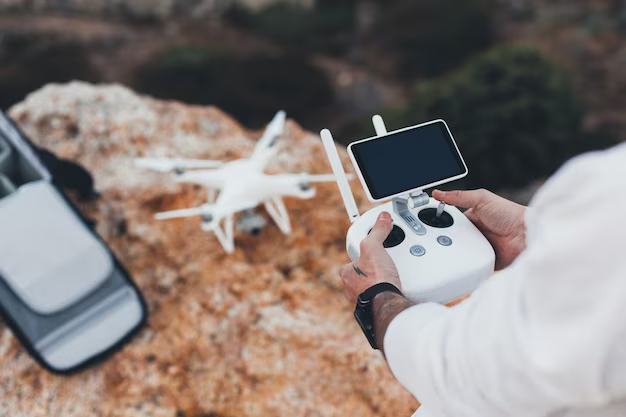
Role of Energy Efficiency in Drone Flight
The efficiency of a drone’s power system determines how well it can perform tasks while consuming minimal energy. Energy-efficient systems are designed to ensure that power is used effectively throughout the flight, from takeoff to landing. This involves:
- Optimized power distribution: Ensuring that power is delivered where it is needed most, without excess energy consumption.
- Energy-efficient components: Using low-power sensors and electronics, which can significantly reduce overall power consumption.
- Flight efficiency: Designing flight paths and navigation algorithms that minimize energy wastage by optimizing speed, altitude, and trajectory.
Effective power management in drone systems isn’t just about using energy efficiently but also about ensuring that every component of the power system works in harmony to extend flight time while maintaining the desired level of performance. By understanding how these key components function together, manufacturers and operators can make informed decisions on battery selection, motor choice, and flight system design to achieve the best balance between performance and power efficiency.

Innovative Power Management Techniques
To optimize drone performance and maximize flight time, it’s essential to employ innovative power management techniques. These techniques aim to improve energy efficiency, minimize energy wastage, and enhance the overall flight experience. Here are some of the most promising strategies:
1. Battery Optimization and Power Control Systems
- Smart Charging and Discharging Algorithms: These algorithms help monitor the state of charge (SOC) of the battery in real-time, ensuring that it is neither overcharged nor excessively discharged. By managing the charging and discharging process more intelligently, drones can maintain battery health and extend battery life. Such algorithms may also adjust power levels based on environmental factors like temperature or humidity, which can affect battery efficiency.
- Battery Health Monitoring: Incorporating Battery Management Systems (BMS) into drones allows for continuous monitoring of the battery’s health, detecting any faults or issues early on. By tracking parameters like voltage, current, and temperature, BMS can predict potential failures and optimize charging cycles, which helps to improve the lifespan of batteries and ensure safe operation during flights.
- Dynamic Power Scaling: Some advanced power systems allow dynamic adjustment of the power usage during different phases of flight. For instance, power may be scaled down during hover or cruising and ramped up during takeoff or high-speed maneuvers. This adaptive approach helps to maximize flight time without compromising performance.
2. Power-Efficient Flight Modes and Algorithms
- Energy-Saving Hover Mode: Hovering requires significant power because the drone’s motors have to work hard to keep the drone stationary. Some drones are designed with energy-efficient hover modes that use advanced algorithms to reduce power consumption during extended hovering. These algorithms adjust the throttle and motor speed to minimize energy usage while still maintaining stable flight.
- Altitude and Speed Optimization: Power management algorithms can adjust the drone’s flight altitude and speed to optimize power consumption. By maintaining an optimal speed and altitude for the drone’s weight and battery capacity, the drone can fly more efficiently and cover longer distances on a single charge.
- Flight Path Optimization: Using GPS and AI-powered flight path planning, drones can automatically choose the most energy-efficient route. Algorithms can take into account factors like wind speed, temperature, and distance to reduce unnecessary power consumption while ensuring the drone reaches its destination.
3. Real-Time Power Consumption Monitoring
- Telemetry Data: Drones can be equipped with telemetry systems that monitor and transmit real-time data on power consumption. This enables operators to track how much power is being consumed during flight and make adjustments to flight plans if necessary. Additionally, this data can be analyzed post-flight to identify areas where energy savings can be made in future missions.
- Onboard Power Consumption Monitoring: By integrating real-time power monitoring systems on the drone, operators can receive alerts when power levels are getting low or if there is any anomaly in power consumption. This can help prevent unexpected power failures, ensuring the drone can complete its mission safely.
4. Energy Regeneration Techniques
- Regenerative Braking: Similar to how electric cars regenerate energy during braking, drones can implement regenerative braking systems to recover some of the energy that would otherwise be lost. When the drone slows down or descends, it can convert kinetic energy into electrical energy, which is then stored back into the battery. This process helps extend the flight time, especially in urban drone applications where frequent altitude changes occur.
- Solar-Powered Drones: Some drones are equipped with solar panels to harness energy from the sun during flight. While solar panels can’t entirely replace the need for batteries, they can supplement power during flight, particularly in long-duration applications like surveillance or environmental monitoring. Solar-powered drones are still in the early stages of development, but they have shown great promise for reducing reliance on conventional batteries.
5. Energy Harvesting from the Environment
- Kinetic Energy Recovery Systems (KERS): By using the movement of the drone to capture and store energy, KERS can supplement the drone’s battery. This concept is particularly useful for drones operating in areas where frequent takeoffs, landings, and altitude changes are necessary. The energy captured can help extend the drone’s flight time during specific phases of flight.
- Wind and Thermal Energy Harvesting: In certain specialized applications, drones can be equipped with technology that captures ambient wind or thermal energy to supplement power needs. Wind turbines or thermoelectric generators can be used to convert environmental energy into usable electrical power, helping to alleviate the strain on the drone’s battery.
6. AI-Powered Power Management
- Machine Learning for Power Optimization: Artificial intelligence and machine learning algorithms can be used to predict the drone’s power consumption based on various factors like flight patterns, weather conditions, and payload. AI can dynamically adjust the power usage during flight, ensuring that energy is conserved when possible and that the drone performs optimally when needed.
- Real-Time Adaptive Power Management: AI can help adjust power management strategies in real-time by analyzing data from various sensors (temperature, battery health, motor load, etc.). Based on this input, the system can optimize the drone’s performance and adjust power consumption to enhance flight time without compromising critical tasks.
7. Advanced Power Conversion and Distribution
- Power Converters: Efficient power conversion is essential for ensuring that the electrical power from the battery is effectively distributed to the drone’s systems. Advanced power converters that provide high efficiency at varying loads can help reduce power loss during conversion and improve overall system efficiency.
- Load Balancing and Distribution: Power distribution systems that balance the load across various components, such as motors, sensors, and communications systems, can help ensure that the drone does not experience power surges or shortages. Optimizing the power distribution network within the drone can significantly improve power efficiency.
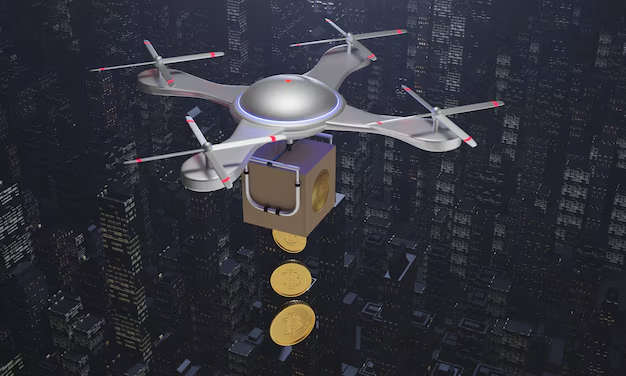
Power Efficiency in Drone Communication and Navigation Systems
For drones to operate efficiently and maximize flight time, optimizing the power consumption of their communication and navigation systems is essential. These systems are crucial for safe, effective, and autonomous operation, but they can also be among the most power-hungry components of the drone. Therefore, understanding and implementing power-efficient communication and navigation techniques can significantly enhance a drone’s overall performance.
1. Communication Systems: Reducing Power Consumption Without Sacrificing Connectivity
Communication systems in drones are responsible for transmitting data between the drone and its operator or other networked devices. These systems enable real-time video feeds, telemetry data, and command-and-control signals. However, they can quickly drain a drone’s battery if not optimized. Key strategies for improving the power efficiency of communication systems include:
- Low Power Wide Area Networks (LPWAN): Technologies like LoRaWAN (Long Range Wide Area Network) are becoming popular in drone communications for low-power, long-range data transmission. LoRaWAN consumes significantly less power compared to traditional cellular or Wi-Fi systems, making it ideal for applications like agricultural monitoring, surveillance, or environmental data collection, where high bandwidth is not required.
- Adaptive Data Rates: By adjusting the data rate based on the operational conditions, drones can minimize the energy used by their communication systems. For example, if the drone is in a stable flight condition or flying in a region with good signal strength, it can reduce the transmission power or data rate to conserve battery life. Adaptive modulation and coding (AMC) techniques can adjust the communication rate based on the channel’s quality, thereby improving the energy efficiency.
- Time-Division Multiplexing (TDM): By scheduling communication events during specific time slots (rather than keeping the communication channel open continuously), drones can reduce their communication power consumption. This method allows the drone to reserve bandwidth only when needed, reducing the overall energy required for communication.
- Energy-Efficient Radio Frequency (RF) Modules: The use of low-power RF components, such as Bluetooth Low Energy (BLE) or Wi-Fi HaLow, can significantly reduce the energy required for drone communications, especially for short-range communication needs. BLE, in particular, is well-suited for drones that need to communicate with nearby sensors, ground stations, or other drones without continuously draining the battery.
- On-Demand Data Transfer: Instead of continuously transmitting data, drones can be programmed to send critical data only when necessary, such as during a specific task or mission phase. This approach reduces the time the communication system is active and helps conserve power.
2. Navigation Systems: Balancing Precision and Power Efficiency
Navigation systems, including GPS, inertial measurement units (IMUs), and visual odometry systems, are integral to drone flight. These systems guide the drone’s movements, help it maintain stability, and ensure it reaches its destination safely. However, precise navigation typically requires significant computational power and sensor data processing. Optimizing these systems for power efficiency involves:
- Efficient GPS Usage: GPS is a significant power consumer, especially in drones with high-accuracy requirements. One method of improving power efficiency is assisted GPS (A-GPS), which uses satellite data to speed up the GPS acquisition process and reduce the power consumption associated with GPS search and signal processing.
- GPS Mode Switching: Drones can be designed to switch between different GPS modes based on mission requirements. For example, if high precision is not critical, the drone can use a lower-power GPS mode. Additionally, reducing the frequency of GPS updates when the drone is flying in a stable or known environment can help conserve power.
- Inertial Measurement Units (IMUs) Optimization: IMUs are used to track a drone’s orientation and movement in space. High-end IMUs, particularly those based on microelectromechanical systems (MEMS), can be power-hungry. One approach to optimize power usage in IMUs is to activate them only during critical moments, such as during flight maneuvers or when the drone is experiencing turbulence. This selective activation can help reduce energy consumption.
- Visual and Optical Flow Systems: In addition to GPS and IMUs, many drones use visual odometry or optical flow systems to track movement based on camera inputs. While cameras can consume a significant amount of power, these systems can be optimized by using lower-resolution cameras or reducing the frame rate when high-precision navigation is not required. Moreover, processing the image data on the drone using efficient onboard hardware, like FPGAs, can reduce the load on the main processor and conserve energy.
- Low-Power GPS Alternatives: Some drones can use alternatives to traditional GPS systems, like Radio Frequency Identification (RFID) or Simultaneous Localization and Mapping (SLAM), to reduce power consumption. While SLAM is more computationally intensive, combining it with low-power IMU and camera systems can offer efficient navigation, particularly in indoor or GPS-denied environments.
3. Autonomous Navigation and Power Conservation
Many modern drones are equipped with autonomous navigation capabilities that reduce the need for continuous communication with a ground station. This autonomy is crucial for missions in remote or GPS-denied environments and can also contribute to power efficiency by optimizing the drone’s path and minimizing unnecessary movements.
- Autonomous Path Planning: By using advanced algorithms for path planning and route optimization, drones can select the most energy-efficient flight paths. These algorithms can take into account factors like wind direction, battery level, and destination distance to reduce unnecessary power consumption. For instance, if a drone detects high wind resistance, it can adjust its path to minimize energy expenditure.
- Energy-Aware Navigation Algorithms: AI-powered navigation systems can monitor power consumption in real-time and adjust flight plans based on battery status. These systems use machine learning techniques to predict the most energy-efficient routes based on past flight data, terrain, and weather conditions, ensuring that drones can reach their destination while conserving as much energy as possible.
4. Hybrid Power Systems for Communication and Navigation
Hybrid power systems, which combine different energy sources (such as batteries, solar panels, and fuel cells), can be used to optimize power for communication and navigation. For example, solar-powered drones may rely on solar energy to power communication systems during the day, extending the battery life for more critical tasks, such as navigation, when solar energy is not available.
- Solar-Assisted Navigation: Some drones are equipped with solar panels that provide supplemental power to communication and navigation systems. By charging the battery while the drone is flying, solar power can help reduce the burden on the primary power source, extending the flight time of the drone without sacrificing communication or navigation accuracy.
5. Data Fusion for Efficient Navigation and Communication
Data fusion involves combining data from multiple sensors to create a more accurate and efficient navigation and communication system. By fusing data from GPS, IMUs, cameras, and other sensors, drones can make more informed decisions about their position, flight path, and communication needs.
- Sensor Fusion Algorithms: These algorithms intelligently combine information from different sensor sources to optimize power consumption. For example, if the GPS signal is weak or unavailable, the drone can rely more on IMUs or visual odometry, saving power by reducing the reliance on high-energy sensors.
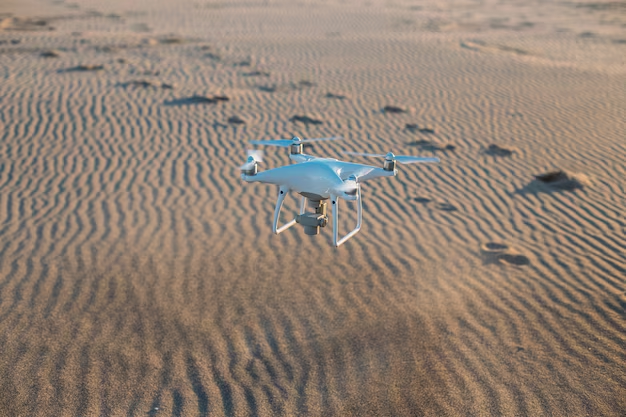
Conclusion
In conclusion, power management in drone technology is crucial to maximizing flight time, performance, and overall efficiency. By adopting innovative power-efficient techniques in both communication and navigation systems, drone manufacturers can extend operational durations while ensuring safe, autonomous, and reliable flight. Whether through optimizing data transmission, using adaptive power-saving algorithms, or integrating alternative power sources like solar energy, these approaches are pivotal in overcoming the power limitations that often constrain drone operations.
As drone technology continues to evolve, the importance of efficient power management will only grow, particularly in applications like aerial surveying, delivery services, and environmental monitoring. By leveraging advancements in power management and system optimization, drones can achieve new levels of sustainability, performance, and autonomy, ultimately contributing to the broader adoption of drones across various industries. With a focus on innovation and efficiency, the future of drone technology looks poised to unlock even greater potential for both commercial and industrial use.

